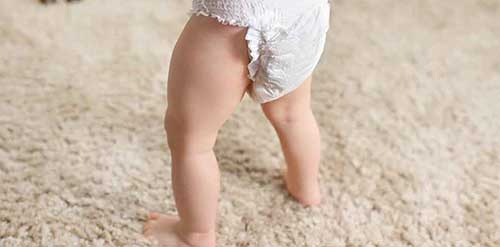Hyundai Motorstudio Senayan Park
Hyundai Motorstudio Senayan Park
Newsroom
The official news from Hyundai Motorstudio Senayan Park and a collection of innovative articles on mobility and sustainability here.
-
Have a Problem with Diaper Waste? Just Turn It into Fertilizer with This Trick!
- Hyundai Motorstudio Senayan Park Senayan Park 2022.06.13
-
While diapers are considered the best solution for parents to take care of their children, disposable diapers also have a negative impact on the environment.
The majority of parents don't think twice about buying diapers because of the convenience they offer, but there are potential risks to family and environmental health.
As an illustration, 21% of marine debris is in the form of disposable diapers. Clearly, this is bad news for the aquatic ecosystem, including the marine animals that live in it. But, how to deal with diaper waste?
Why Is It Important to Dispose Diapers Properly?
Unfortunately, there are still many parents who don't understand the importance of disposing of the 'contents' of diapers before throwing them away. The diaper packaging actually includes this advice, but it's too small to read and too easy to ignore.
The main reason why you have to throw the contents of a diaper down the toilet is for health reasons. It is possible that if the diaper is disposed of directly into the landfill, bacteria from the diaper can contaminate the surrounding water source.
What's more, there are various viruses from human feces, so it's very important not to throw diapers straight away without cleaning them. A number of viruses that may be found include folio, hepatitis, E. coli, salmonella, rotavirus, norovirus, sapovirus, enterovirus, astrovirus, and adenovirus.
Disposing of diaper waste directly is against the recommendations of the World Health Organization. It does not violate the law, but the effect is quite bad for the health of the family and the environment.
Are there Eco-Friendly Diapers?
Disposable diapers, no matter how good its design, will have a bad impact on the environment. The majority of diapers today are produced using plastic materials which take a long time to decompose. So, what's the solution?
1. Diapers from Trees
Diapers made from plants are now widely produced, and this is good news for the environment. Plants that are used as raw materials for diapers, like bamboo and wood, offer the same qualities as synthetic materials. The advantage is that diapers from plants are more friendly and organic.
Unlike synthetic materials, tree is renewable energy. So, the more organic diapers, the less plastic diapers that end up in landfills. For instance, diapers made of bamboo are reliable enough in terms of softness and absorption. Furthermore, choosing bamboo diapers means taking one step further in protecting the environment.
2. Biodegradable Diapers
Biodegradable diapers can break down over time, sometimes in just a few months. In contrast, plastic diapers are more damaging to the environment and the ecosystem. In general, plastic diapers can last up to 500 years or more while still releasing toxic chemicals into the soil and water.
It's much better to have biodegradable diapers. Though, tree-based diapers and biodegradable diapers are not the same. In short, not all diapers from trees are biodegradable diapers, but all biodegradable diapers use plant-based materials, especially bamboo.
Although the majority of eco-friendly diapers cost more, this is not always the case. Some products are quite pocket friendly. Another good news, the packaging used is also eco-friendly.
How to Reuse Diaper Waste?
Not much can be done about diaper waste, especially in terms of recycle. Mostly, diaper waste is sometimes used as planting media, fertilizer, and recycled with some notes.
1. Growing Medium
The most important part of the diaper is the hydrogel, which is the tiny granules that absorb water. Because it contains water, hydrogel can be used as a growing medium. Hydrogel can act as a source of water because of their ability to retain water.
Because the water supply has been fulfilled through hydrogel, watering is no longer needed. Diaper waste can be used as a growing medium independently or mixed together with other planting media.
2. Compost Fertilizer
Actually, it is not purely a compost because diaper waste is not organic material. More precisely, as a mixture of compost. Especially for dirty diapers, this type is perfect for compost mixture. When used as a compost mixture, diaper content does not have to be cleaned first.
3. Biogasification
Apart from being a mixture of compost, biogasification can be used as a method to treat diaper waste. The biogasification process basically aims to break down non-biodegradable materials into carbon, water, compost, or other materials such as soil. Diaper waste is suitable as the main ingredient for biogasification, but this process cannot be carried out on a home scale.
4. Community
The best solution is to distribute it to the community. There are many communities focused on treating diaper waste, and these can be found on the internet. The next task is to find the one closest to where you live, then pay attention to the term, and hand over the diaper waste.
5. Recycling
It is not easy to reuse diaper waste, although recycling can be an option. The problem is, recycling diaper waste cannot be done on a home scale. It is possible to take certain parts and reuse them.




